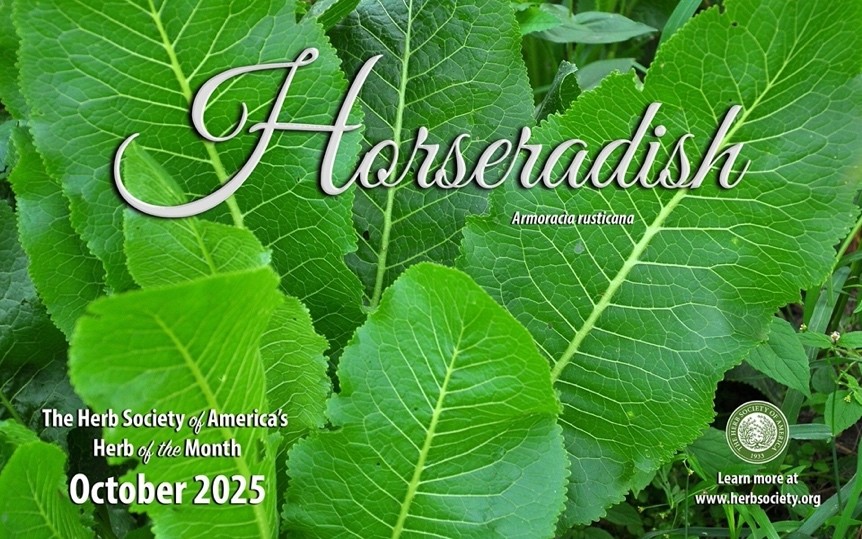October 2025 Herb of the Month: Horseradish
(Armoracia rusticana)


Horseradish originated in central Europe. Germans called it “meerrettich (sea radish) because it grows by the sea. Some believe the English began calling it “mareradish” mispronouncing the German word. Eventually the name horseradish became the accepted name. Horseradish has also been known by the names “redcole” in England and “stingnose” in some parts of the United States. It was cultivated by ancient Greeks and Romans for medicinal uses such as back pain and as an aphrodisiac in 1500 B.C. Other medicinal uses have been explored over the centuries, from sore throats and coughs, asthma, toothaches, and arthritis to tuberculosis. Raw horseradish is rich in vitamins A and C.
The horseradish plant grows 2-3’ tall with long strap-like leaves. Cultivated for its thick, fleshy roots that are harvested and consumed, the tap root of horseradish reaches a foot or more. This hardy perennial through zone 5 is often grown as an annual. However, small bits of the root which remain from harvesting can regrow and establish quite a few more plants.
60% of the world’s supply of horseradish is produced in Collinsville, Illinois and surrounding vicinity due to the area’s potash rich soil. 24 million pounds of horseradish roots are used to produce 6 million gallons of prepared horseradish annually in the United States. John Henry Heinz bottled and sold his mother’s horseradish sauce in 1869 and was one of the first condiments sold in the United States.
